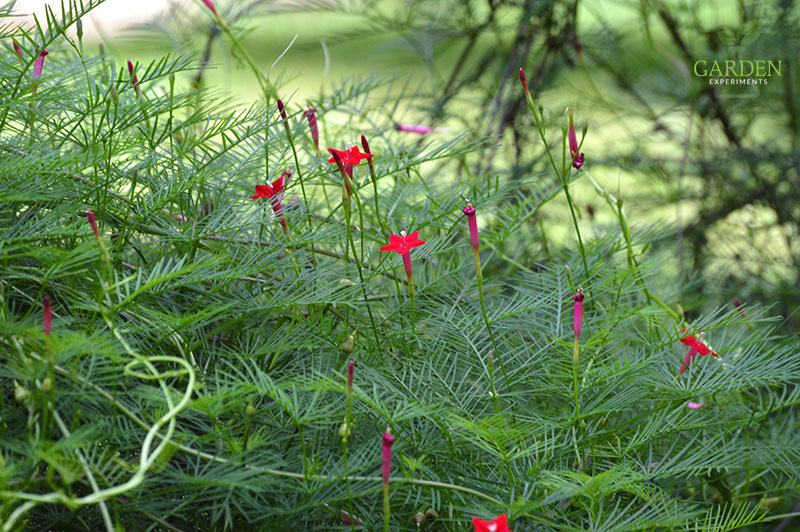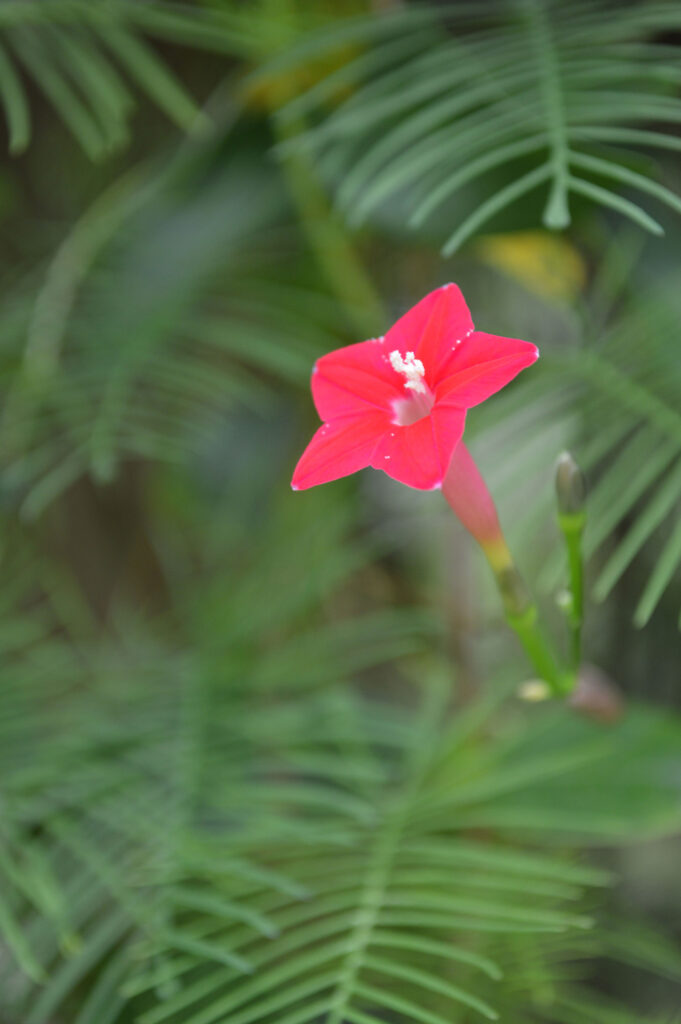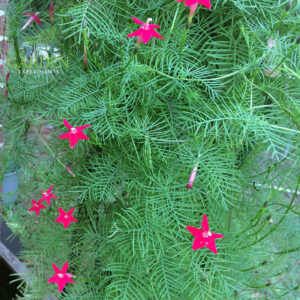In spring, my cypress vine (Ipomoea quamoclit) is covered by tiny, star-shaped, brilliantly red flowers. Although the flowers are tiny, they really stand out against the light green of the leaves and vine.
My favorite part about the cypress vine is its dainty, feather-like leaves. The leaves look so fragile and fairy-like that, even when it isn’t blooming, this vine puts on a little show.
Cypress Vine Fast-growing and Re-seeds
The vine is pretty strong and it can be aggressive, in spite of the delicate appearance of its leaves. It grows rapidly and may cover nearby plants or structures.
Cypress vine produces so many seeds that you will soon have twenty vines where you only planted one. The following year, vines will pop up in the nearby soil.
Pull out any unwanted vines before they overgrow the surrounding plants. You can always dig a few up and give them to your gardening friends!
Invasive or Not? It Depends on the Garden
Despite its fast growth rate and how much it spreads through seed dispersal, I have always liked this vine. My advice is to plant it in a place where you can mow around it to contain the growth of new vines or plant it in a place where you won’t mind if it spreads a bit.
This year, I planted my cypress vine in a container and it is growing up a trellis. It is adjacent to a flower bed which may have some seedlings in it the following year, but I don’t mind just pulling those out. If you plant the vine, you must have a plan to keep it contained so that it does not spread throughout your garden.
Cypress vine is native to Central and South America. It is deemed invasive in some U.S states. Make sure it is not listed as an invasive species in your area before you add it to your garden. You can check with your local extension service office for this information.

How to Grow Cypress Vine
Cypress vine is probably one of the easiest plants to grow in the southeast. This plant does well in USDA zones 6 through 9. It’s an annual plant and it will die over the winter, but I usually have more plants the following year that are a result of self-seeding.
Where to Plant a Cypress Vine
Plant your vine in full sun for best results, though it will tolerate part-shade. Provide it a structure for it to climb on – like a trellis or an arbor. You’ll need to train the vine to climb where you want it or it will spread onto everything around it. So, check it daily to wind errant strands onto the climbing structure and away from other plants.
It prefers well-drained but evenly moist soil but it can grow in most soil types after it has been established. In drought-prone areas or in sandy or clay soil, mulch the base to keep it more evenly moist.
Water the vine when you see it wilting. In zone 7b, we get enough rain so I don’t water it much except when I have it planted in a container. Then I have to water it every few days to keep it from wilting.
Wildlife Benefits of Cypress Vine – Food for Hummingbirds
Cypress vines produce flowers for several months – starting in spring and continuing through the fall. Mine has bloomed right into early November.
The tiny star-shaped red flowers attract butterflies and hummingbirds. I have watched a ruby-throated hummingbird flit from flower to flower on this vine, sipping on their nectar.
Combine that with the bright red flowers and feathery leaves and it’s worth the work to contain it just to have it in my garden.


